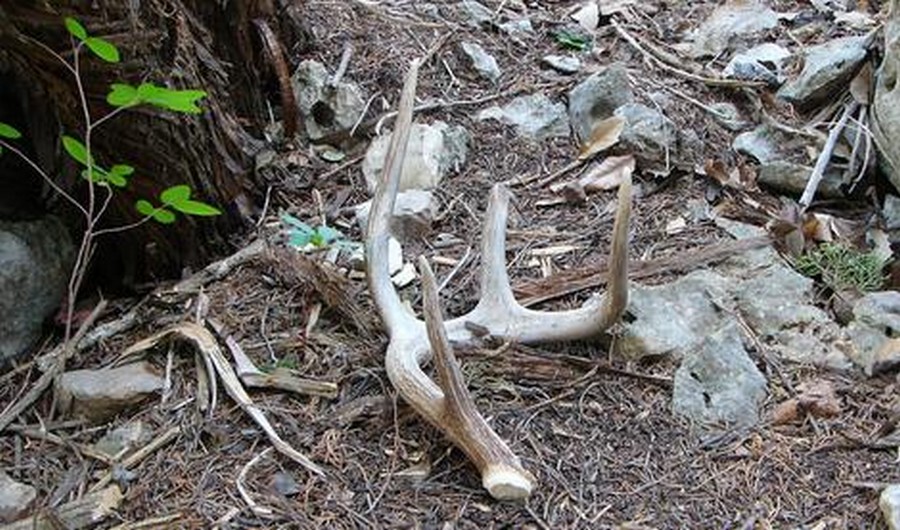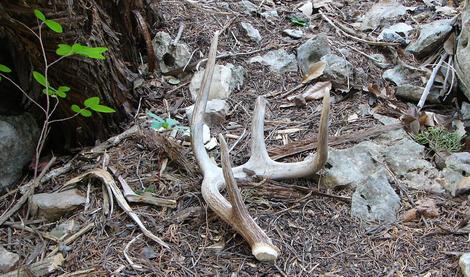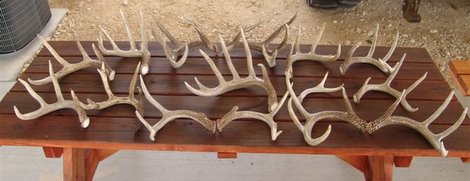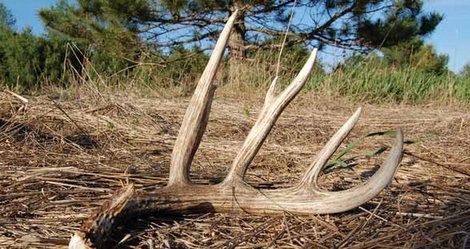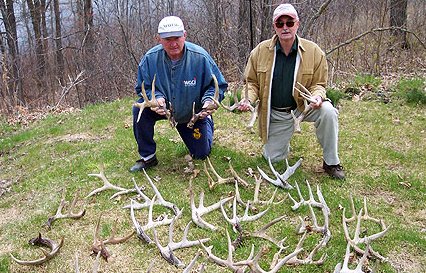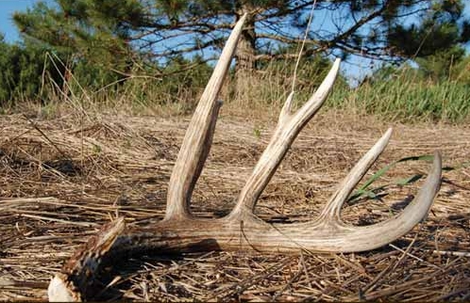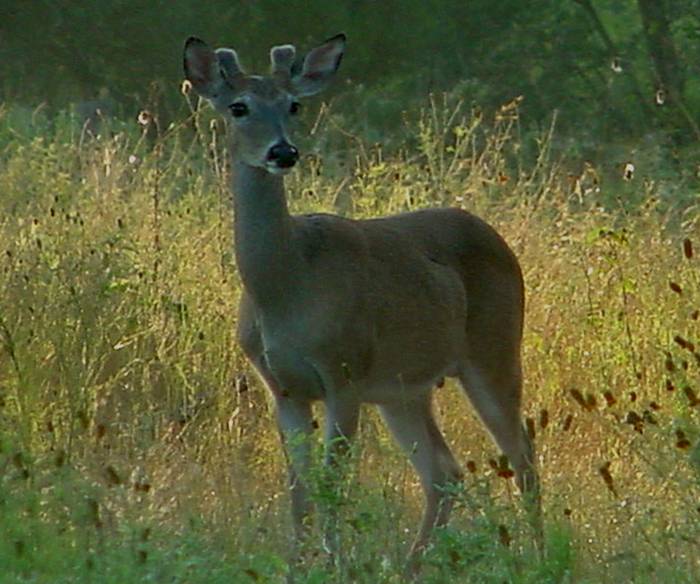Spring has officially sprung and although a few white-tailed bucks may still be holding onto last year’s antler growth, the vast majority of bucks have already shed their antlers. The timing of an individual buck’s antler development depends upon many things, but the primary factor is the buck’s hormone levels. In short, areas where local deer populations breed earlier always shed antlers earlier. And although looking for deer sheds is not an important part of a deer management, it can be awfully fun!
This is an exciting time of the year, not only because whitetail bucks are beginning to grow new velvet-covered antlers, but also because their antlers from last year are lying on the ground… somewhere. A lot of hunters may have their spring food plots in the ground or their supplemental protein feeders filled, but then neglect to get out in the field during the spring. I was once guility of this. Following the close of deer season I would just shut her down and stay out of the field until mid-summer, but that was many years ago.
Since that time, early spring has become one of my favorite times to get out into the deer’s world. Not only can I get a good assessment of late-winter habitat use, but I have waited long enough that most bucks have shed the last year’s antler growth. And that gives me my best chance at finding a few shed antlers. With short green grass, sparse brush, most antlers laying on the ground, and favorable weather, early spring is my best opportunity to cover some country and see what I can find.
The best spots to find shed “horns” year-in and year-out continue to be food plots, in the general area around supplemental feeders, watering sources, draws, woodlines, and well-traveled corridors. In areas with thick brush cover, I always have good success in tree-covered (closed canopy) areas with an open understories (no brush), primarily because deer often use these spots as bedding areas. In fact, two of the four whitetail sheds I found yesterday were in these types of areas. The other two were along woodlines, where the edge of a wooded area turned into open field.
Since finding shed antlers is not always easy, especially in an area with a low deer density, it is a good idea to look in areas that you think deer reguarly visit. Yesterday, I spent 2 1/2 hours of continuous walking who-knows-how-many miles and covering an untold number of acres to find 4 sheds, and one of those was from the year prior. And this was even after narrowing down my search to areas that I believed deer frequented. Of course, I have spent longer days in the field looking for sheds and have come back with less, often zero.
But yesterday I found 4 sides, no matches, and none of them were exceptional by any stretch of the imagination. It was still enjoyable, and there is always something about standing exactly where something notable happened, at least in a buck’s life anyway. Currently, the deer is without his most notable defenses. His testosterone levels are low, there is no need to battle for receptive does, and the buck has started a new antler growing cycle.
The next time I stand over his antlers they may still be attached.
